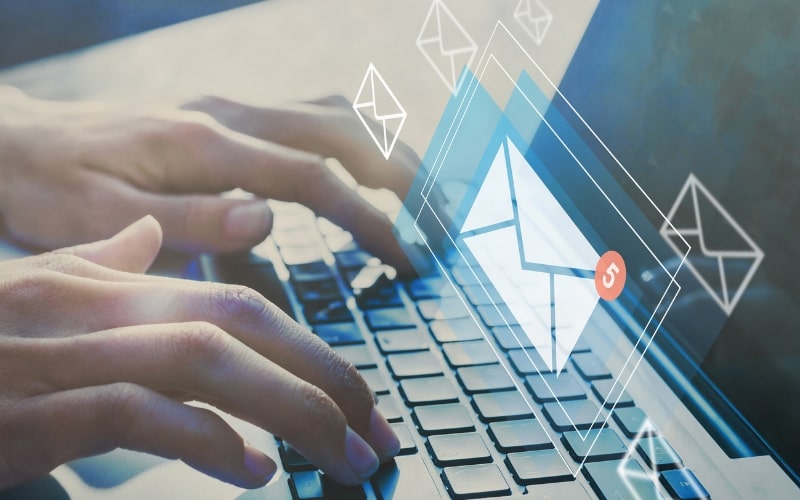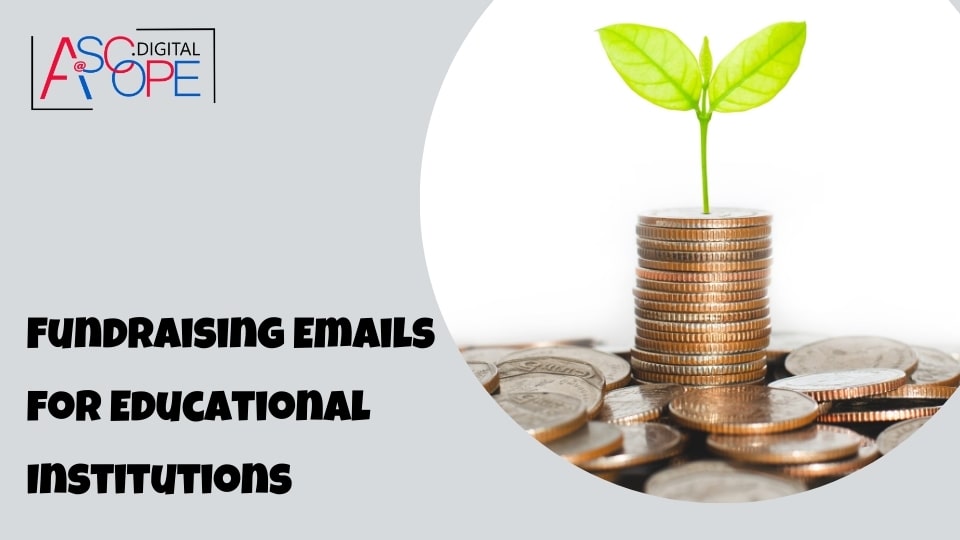Fundraising is a crucial aspect of maintaining and enhancing the quality of educational institutions. From private schools to universities, raising funds ensures that students have access to better resources, facilities, and opportunities. One of the most effective tools for fundraising is email marketing. Through well-crafted fundraising emails, educational institutions can reach a broad audience, build relationships with donors, and secure the necessary funds to support their missions. This article will delve into the intricacies of crafting effective fundraising emails for educational institutions, offering tips and strategies to maximize their impact.
Understanding the Importance of Fundraising Emails
Fundraising emails are a direct and personal way to communicate with potential donors. Unlike other forms of communication, emails allow for a tailored message that can address the specific interests and concerns of the recipient. This personalized approach is essential for educational institutions that rely on donations to fund scholarships, research, infrastructure, and other critical needs.
Emails also provide a cost-effective way to reach a large audience. With the right strategy, educational institutions can send targeted messages to alumni, parents, local businesses, and other supporters. This broad reach, combined with the ability to personalize messages, makes email marketing a powerful tool for fundraising.
Crafting Effective Fundraising Emails

1. Define Your Audience
Before crafting a fundraising email, it’s crucial to understand your audience. Educational institutions often have diverse donor bases, including alumni, parents, local businesses, and community members. Each of these groups may have different motivations for giving, and your emails should reflect these differences.
For instance, alumni may be more inclined to donate if they see how their contributions can enhance the reputation of their alma mater, whereas parents might be motivated by improvements in student resources and facilities. Segmenting your email list based on these demographics and interests allows for more personalized and effective communication.
2. Craft a Compelling Subject Line
The subject line is the first thing recipients see, and it significantly impacts whether they open the email. A compelling subject line should be concise, engaging, and give a hint of what the email contains. It should create a sense of urgency or highlight the impact of their potential donation.
For example, a subject line like “Help Us Build the Future: Donate Today” or “Your Support Can Transform Lives” can grab attention and encourage recipients to open the email.
3. Personalize the Email Content
Personalization goes beyond addressing the recipient by name. It involves tailoring the content to their specific interests and past interactions with the institution. Use data from previous donations, event attendance, or even survey responses to customize the email content.
For example, if a parent previously donated to support sports programs, mention how their past contributions have made a difference and highlight current needs in the same area. Personalization shows recipients that their individual support is valued and makes them more likely to engage with the email.
4. Tell a Story
Storytelling is a powerful tool in fundraising emails. It helps to create an emotional connection with the recipient, making the cause more relatable and urgent. Share stories of students whose lives have been changed by the institution, success stories of alumni, or specific projects that need funding.
For instance, instead of merely stating that the school needs funds for a new library, tell the story of a student who has excelled academically thanks to the resources provided by the current library and explain how a new facility could benefit even more students.
5. Highlight the Impact
Donors want to know that their contributions are making a difference. Clearly outline how the funds will be used and the impact they will have. Use specific examples and, if possible, include testimonials or quotes from beneficiaries.
For example, you could write, “Your donation of $100 can provide textbooks for three students for an entire semester. Hear from Jane, a sophomore, who shares how having access to these textbooks has improved her academic performance.”
6. Include a Clear Call to Action
Every fundraising email should have a clear and compelling call to action (CTA). This is what you want the recipient to do next, whether it’s making a donation, signing up for a fundraising event, or sharing the email with others.
Make sure the CTA stands out and is easy to follow. Use buttons or links that lead directly to the donation page or event registration. Phrases like “Donate Now,” “Support Our Students,” or “Join Us in Making a Difference” can be effective.
7. Optimize for Mobile Devices
Many recipients will read your emails on their mobile devices, so it’s essential to ensure that your emails are mobile-friendly. Use a responsive email design that adjusts to different screen sizes, keep the content concise, and make sure links and buttons are easily clickable.
8. Follow Up
Don’t let the conversation end with a single email. Follow up with recipients who haven’t responded, thank those who have donated, and provide updates on the impact of their contributions. Regular communication helps build a relationship with donors and keeps them engaged with the institution’s mission.
Example of a Fundraising Email
Below is an example of a well-crafted fundraising email for an educational institution:
Subject Line: Transform Lives with Your Support
Email Body:
Dear [Recipient Name],
As we approach the new academic year, we are excited about the opportunities and challenges that lie ahead. Our mission at [Institution Name] has always been to provide our students with the best possible education and support, ensuring they have the tools they need to succeed.
This year, we are embarking on a critical project to enhance our science labs, providing state-of-the-art equipment and resources that will benefit all our students. With your generous support, we can make this vision a reality.
Meet Jane
Jane is a sophomore who dreams of becoming a scientist. Thanks to the resources provided by our current science labs, she has excelled in her studies, earning top marks in her class. However, with improved facilities, she and many other students will have even greater opportunities to explore and innovate.
Your Impact
- A donation of $50 can provide essential lab materials for a week.
- A donation of $100 can fund a student’s participation in an advanced science workshop.
- A donation of $500 can contribute to purchasing new lab equipment.
Every contribution, no matter the size, makes a significant difference in the lives of our students. [Institution Name] has always thrived thanks to the support of dedicated individuals like you.
Join Us in Making a Difference
[Donate Now Button]Thank you for considering a donation to support our students. Your generosity ensures that they have the resources they need to succeed and achieve their dreams.
Warm regards,
[Your Name] [Your Title] [Institution Name]Best Practices for Fundraising Emails
Consistency and Frequency
Sending fundraising emails regularly helps keep your institution at the forefront of donors’ minds. However, it’s important to strike a balance between staying in touch and overwhelming your recipients. Determine an appropriate frequency based on your audience’s preferences and the nature of your campaigns.
A/B Testing
A/B testing involves sending two versions of an email to see which one performs better. Test different subject lines, email content, CTAs, and images to determine what resonates most with your audience. Use the insights gained from these tests to refine your future emails.
Leveraging Data and Analytics
Use data and analytics to track the performance of your fundraising emails. Metrics such as open rates, click-through rates, and conversion rates provide valuable insights into what’s working and what needs improvement. Analyzing this data helps you make informed decisions and optimize your email campaigns for better results.
Integrating Social Proof
Including social proof, such as testimonials, donor lists, or recognition of previous contributions, can boost credibility and encourage more donations. Highlighting the names of prominent donors or sharing quotes from satisfied contributors can reassure potential donors about the impact and legitimacy of their donations.
Offering Multiple Giving Options
Different donors have different preferences for how they give. Offer multiple giving options, such as one-time donations, recurring donations, and pledges. Provide clear instructions on how to make a donation and include links or buttons that make the process straightforward and convenient.
Addressing Common Challenges

Overcoming Donor Fatigue
Donor fatigue occurs when supporters feel overwhelmed by frequent requests for donations. To mitigate this, vary your email content and include updates, success stories, and expressions of gratitude in addition to donation requests. Showing appreciation and keeping donors informed about the impact of their contributions can help maintain their engagement.
Ensuring Email Deliverability
Even the best-crafted fundraising email is ineffective if it doesn’t reach the recipient’s inbox. To improve deliverability, avoid spammy language, ensure your email list is clean and up-to-date, and follow best practices for email authentication. Testing your emails with different email clients and devices can also help identify and resolve potential issues.
Engaging New Donors
Attracting new donors can be challenging, but it’s essential for the long-term sustainability of your fundraising efforts. Use targeted campaigns to reach new audiences, such as alumni who haven’t donated before or parents of incoming students. Highlight the unique benefits and impact of donating to your institution to capture their interest and support.
Case Studies and Success Stories
Case Study 1: University of Excellence
The University of Excellence successfully raised $1 million for their new library through a targeted email campaign. By segmenting their email list and personalizing the content, they engaged alumni, parents, and local businesses. The campaign included compelling stories from students and detailed the specific impact of each donation level. The result was a highly successful campaign that exceeded their fundraising goal.
Case Study 2: Bright Future Academy
Bright Future Academy, a private school, needed to raise funds for a new playground. They crafted a series of engaging emails featuring stories from students and teachers about the benefits of outdoor play. By using A/B testing, they identified the most effective subject lines and CTAs, resulting in a 40% increase in donations compared to their previous campaign.
Conclusion
Fundraising emails are a vital tool for educational institutions looking to secure the funds needed to support their missions. By understanding your audience, crafting personalized and compelling content, and following best practices, you can maximize the impact of your email campaigns. Remember to tell stories, highlight the impact of donations, and maintain regular communication with your donors. With a strategic approach, your institution can build strong relationships with supporters and achieve its fundraising goals. Thus, improving traffic and sales for your website. Read more on the other reasons why your website isn’t getting traffic.


